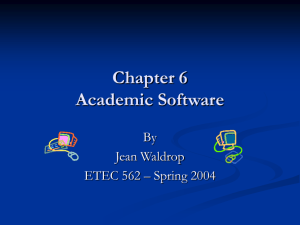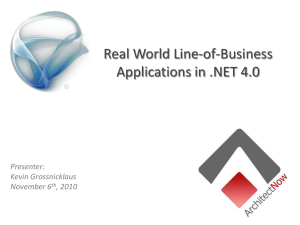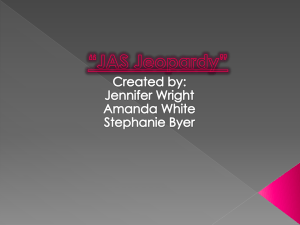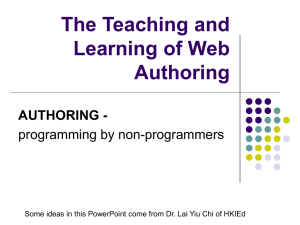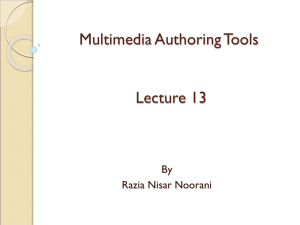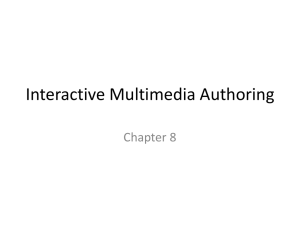Hypervideo
advertisement
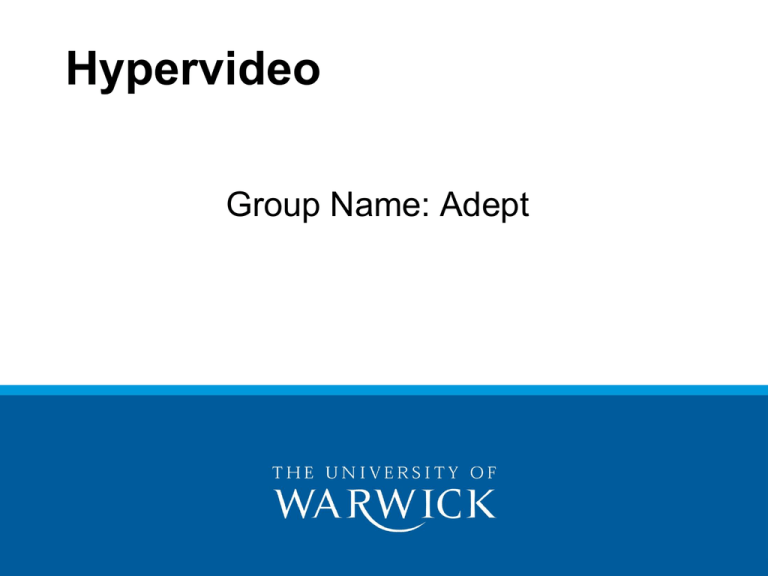
Hypervideo Group Name: Adept Group Members • Vinay Kalasannavar – Content authoring, presentation – Code samples • Sagar Sahay – Strategy authoring • Poorna Chandra Suraj – Labelling and weights – MOT/LAG Workflow Introduction • Hypervideo = "hyper linked video“ • Video stream that contains embedded, user click-able anchors • Allowing navigation between video and other hypermedia elements Introduction Introduction Introduction Introduction Introduction… • HV = video + a non linear information structure – Allowing user to make choices – content of the video and the user's interests • Analogous to hypertext: – "Element of time“ – Text is normally static, video is dynamic • Hypervideo has different technical, aesthetic, and rhetorical requirements – A link from an object in a video, that is visible for only a certain duration Motivation • Wider availability of broadband - has increased the linking video capabilities • Digital libraries - video is an important part. • Vast video archives: could be useful in education and historical research. Motivation for us • VideoClix – http://www.videoclix.tv/#vcx_pjsb7d234081 • Hypervideo and Silverlight: – "a video that contains embedded links that allow navigation between video and other media elements" – http://www.silverlight.net/learn/videos/silver light-videos/hypervideo-part-1/ How it works • Segment the video appropriately • Add the metadata required to link from frames (or even objects) • To logically relevant information in other media forms Concepts and Technical Challenges • Hypervideo is challenging: separating video into linkable content. • Video = sequence of images – To segment a video into meaningful pieces (objects/scenes) – It is necessary to provide a context, both - in space and time • Manual segmentation difficult: – For .E.g.: • A short video at the rate of 30 frames per second • 30 seconds = 900 frames Challenges cntd.. • The smallest linkable unit of a video – a single frame: easy, but cannot contain video info – a scene (minimum sequential set of frames that conveys meaning) – algorithms need capability of detecting scene transitions • Time introduces complexity: – Assuming frame is the smallest time unit, – Separating the frame image into its constituent objects - segmentation at the object level. – Follow the same object through a sequence of frames (object tracking) Concepts cntd.. • After nodes are segmented and combined with the associated linking information. – This metadata must be incorporated with the original video for playback. – The metadata is placed conceptually in layers, or tracks, on top of the video. – This layered structure is then presented to the user for viewing and interaction. Concepts cntd.. • Three components: – One or more videos – Markers embedded into the video • invisible to the user • but perceived by the player – The hypervideo player • The display technology, used to play the hypervideo content. Hypervideo authoring tools • Authoring = The process of creating hypervideo content • Examples: – VideoClix: • A commercially available technology plays on players like QuickTime and Flash – Adobe Flash: • Flash was not designed hypervideo authoring tool - can be difficult using Flash alone • Added functionality through outside software - for e.g.: MoVideo and Digital Lava – Asterpix: • offers a hypervideo service and browser. • Users can convert internet videos sites (such as YouTube) on the fly • viewers may interact and navigate the hypervideo without the need for any special software. – Silverlight. Hypervideo authoring tools • In Silverlight: – A word appears on the screen and when you click on it, the first video pauses and a second video begins detailing your retirement plan options. – You click on the question mark... – You click on the glowing question help button… Related research • US Patent 6462754 (October 8, 2002) – Method and apparatus for authoring and linking video documents (http://www.patentstorm.us/patents/6462754.html) • Combining Spatial and Navigational Structure in the Hyper-Hitchcock Hypervideo Editor – (http://www.fxpal.com/publications/FXPAL-PR-03250.pdf) • HyLive: Hypervideo-Authoring for Live Television 2008 – (http://www.springerlink.com/content/r46415461n0505 85/) Hypervideo Applications. • Education – Computer-Based Training – Research and Development • Entertainment – Youtube • Marketing Possible areas for future research • Aesthetic and rhetoric properties of hypervideo • Development of standards • Automatic generation of hypervideo • Computer-Based Training Thank you. • Questions? References 1.http://en.wikipedia.org/wiki/Hypervideo# cite_note-13 2.http://www.csdl.tamu.edu/~l0f0954/acad emic/cpsc610/p-1.htm 3.http://silverlight.net/learn/tutorials/hyper video-cs/
